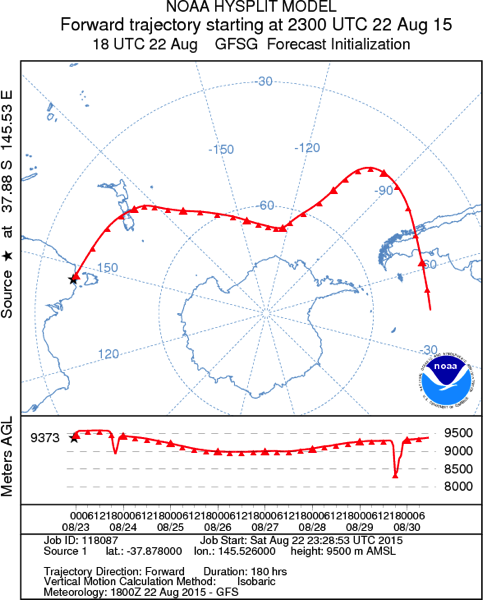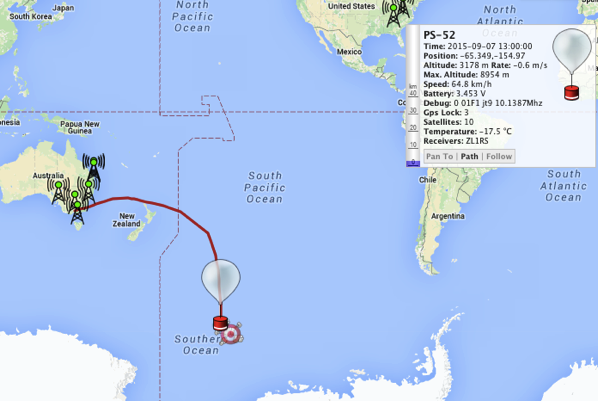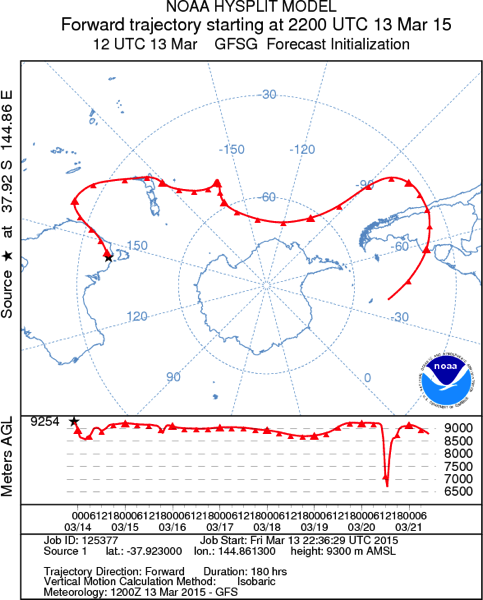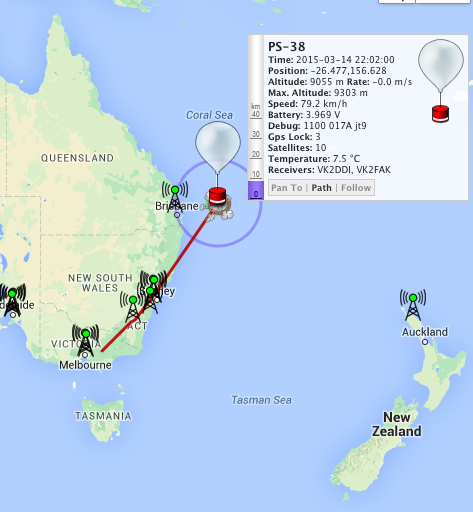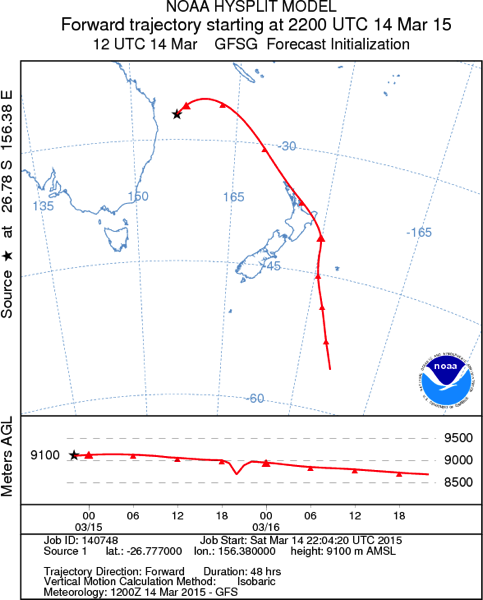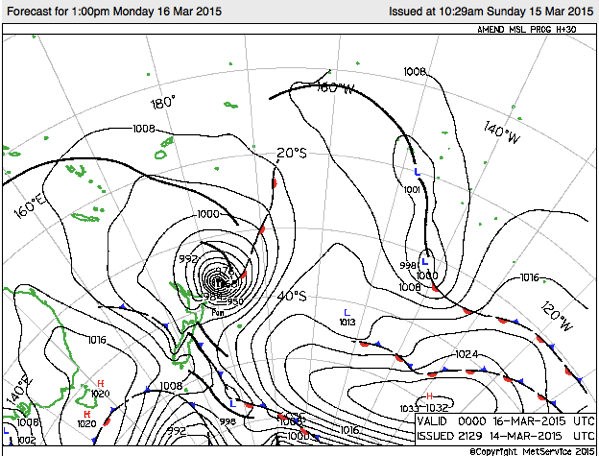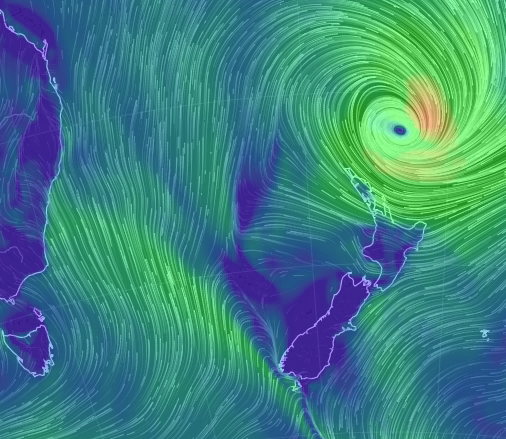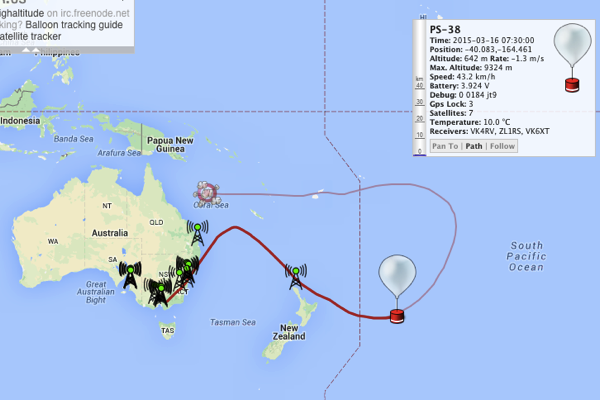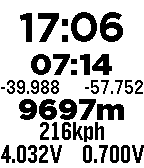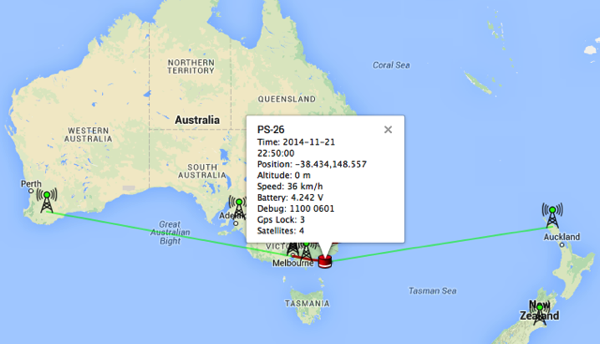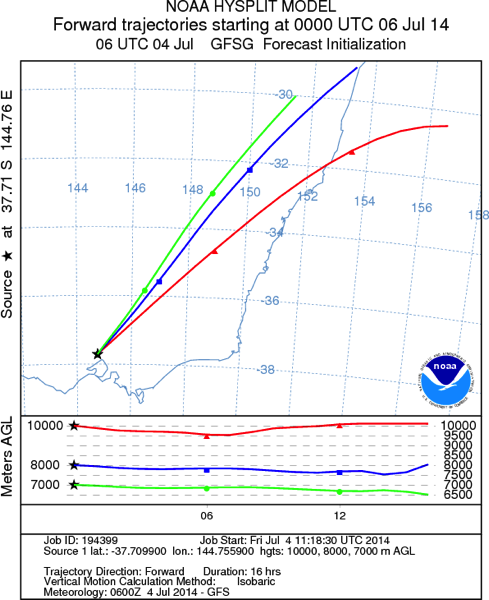Picospace HF payloads send telemetry data using standard JT9 packets.
WSJT-X software has been modified to allow upload of JT9 telemetry from balloons to SNUS (spacenear.us) website.
The software can be downloaded here:
Tested version 1.5.0-devel:
Windows Installer
Source file
Version 2.1.2
Windows Installer
Source file
Version 2.2.1
Windows Installer
Source file
The modified software adds two options on the main page:
* Telemetry: selecting this will allow packets to be uploaded to to server
* Location: selecting this will send your grid square to be displayed on SNUS map
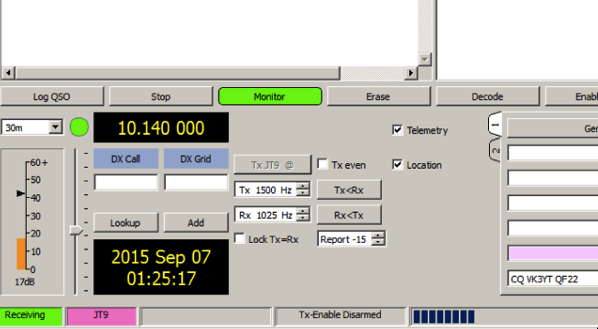
Some important parameters for the software setup:
* The frequencies will need to be set to the standard WSPR dial frequencies:
30m: 10.138700Mhz
20m: 14.095600Mhz
This will put WSRP in the standard 1400Hz-1600Hz audio band, and JT9 at somewhere outside of the WSPR segment, typically at 800Hz/1000Hz/1200Hz/1800Hz, depending on flights. Please see flight announcement for the JT9 offset.
This allows simultaneous tracking of multiple balloons at the same time.
Please note the software will decode multiple payloads automatically with no special settings, ie. if the setup can decode one payload it will decode multiple payloads. You just need to have the correct dial frequency and time synchronisation.
Quick setup guide:
* Mode should be JT9. The “JT9 AND JT65” mode expects the different signals are in different parts of the audio bandwidth and is not recommended.
* Add your callsign and grid square in the settings for the “Location” option to work
* Enable Location and Telemetry options to allow upload of your grid square and telemetry data.
* WSPR/JT9 starts transmitting at the beginning of the scheduled minute, so the computer will need to have the time synced to a time server on the internet.
The software behaves like a standard WSJT-X version otherwise, and can be used for standard QSOs.
The positions of the balloons are displayed on SNUS tracking page spacenear.us which can be accessed through the Tracking shortcut at the top of this web page.
A big thank you to the UKHAS guys for making SNUS available to the HAB community.
The balloon transmission usually starts with two minutes of WSPR transmission, and followed by 2x one minute JT9 messages, at minute 00, 10, 20, 30, 40, 50.
This might be changed to accomodate multiple balloons.
WSJTX can also decode WSPR when running as a separate instance..
Two instances of WSJTX software can be run at the same time, by specifying the -r option on the command line.
One instance can be used to decode WSPR and one to decode JT9.
C:\WSJT\wsjtx\bin\wsjtx -r WSPR

